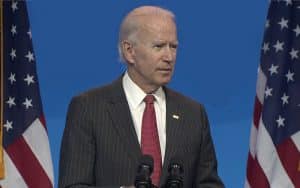Morgan Stanley has revised its projection for annual sales of weight-loss drugs, estimating it to reach $77 billion. The surge in demand for these medications has exceeded supply and has been bolstered by a social media-driven frenzy.
Initially, the financial services firm had anticipated the market size to be $54 billion by 2030. However, due to the overwhelming response from patients and the limited availability of these drugs, the revised forecast reflects a significant increase.
The analysts at Morgan Stanley highlight that if Novo Nordisk’s Wegovy did not experience supply-chain shortages, its sales this year alone could have surpassed $7 billion. Moreover, insurers have displayed a willingness to reimburse approximately 40 million individuals out of the estimated 110 million affected by adult obesity.
Wegovy, an injectable drug primarily used for obesity treatment, has demonstrated promising weight-loss benefits. Additionally, a similar medication named Ozempic, initially prescribed for diabetes management, also aids in weight reduction.
According to the contributors—comprising 16 analysts—the growing emphasis on weight management has extended to treating diabetes more holistically. Furthermore, they anticipate that this weight-centric approach will lead to a broader range of health complications being targeted, such as heart failure, sleep apnea, and kidney disease. Consequently, reimbursement opportunities in the U.S. Medicare population are expected to expand.
In the landscape of weight-loss drugs, Novo Nordisk and Eli Lilly are poised to be the primary beneficiaries. These two companies are projected to capture 82% of the obesity market, with a nearly equal market share split between them.
Morgan Stanley Raises Eli Lilly Price Target
Morgan Stanley has increased its price target for Eli Lilly to $560, making it one of the highest on Wall Street. This update comes from FactSet, a leading financial data provider. Although the new target is only a slight increase from the previous $551, it still reflects strong confidence in the Danish drug maker.
A Look at Other Biopharmas
The report also highlights several other biopharmaceutical companies that are expected to make an impact in the market. These include Zealand Pharma, Structure Therapeutics, Sciwind Biosciences, Regor Therapeutics, and Altimmune. These firms all have promising drugs in their pipelines.
Potential Entrants in the Market
The research paper emphasizes the potential entry of several major players in the pharmaceutical industry, such as Pfizer, Merck, AstraZeneca, and Novartis. The arrival of these companies could potentially lead to a decrease in prices for GLP-1 class medicines. Currently, these medications are priced between $931 and $1,023 per month in the U.S. with rebates of over 60%. In comparison, drugs for treating obesity are priced at $1,349 per month with 40% rebates. The analysts predict that the price of these drugs will decline to about $520 per prescription in 2025 and further decrease to $402 by 2030.
Contract Drug Makers that Support the Market
In addition to pharmaceutical companies, contract drug makers play a crucial role in supporting the pharmaceutical market. Some notable players in this sector include Bachem, Corden Pharma, WuXi AppTec, Catalent, Gerresheimer, West Pharmaceuticals Services, and Schott. These companies specialize in providing fill and finish services as well as delivery device infrastructure.
By closely examining price targets, potential entrants, and contract drug makers, it becomes clear that the pharmaceutical industry is ripe with opportunities for growth and innovation. With the right investment and strategic partnerships, the future looks promising for this dynamic sector.


